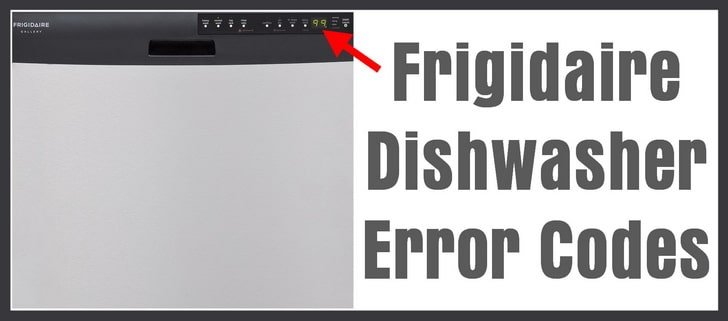
Understanding why this happens is the first step toward preventing it. Just like how we check our car’s oil levels or ensure our phone’s battery is charged, taking care of your dishwasher’s components is key. The heating element, thermostats, or even the control board — all of these work together seamlessly behind the scenes to heat your water. If one part malfunctions, it’s like a domino effect, leading to the E3 error. But don’t worry — with the right care and a bit of know-how, you can stop this pesky problem from cropping up again.
Understanding the E3 Error: The Basics
When you see an E3 error, it’s essentially your dishwasher waving a red flag saying, “Hey, something’s up with the heating!” Think of your dishwasher as a tiny kitchen helper who needs a warm bath to rinse the dishes right. Without proper heating, those greasy pans and coffee-stained mugs won’t come out as sparkling as you’d hoped. The root cause of this error could be a faulty heating element, a temperature sensor issue, or even a problematic main control board.
Let’s break it down further. The heating element in your dishwasher is akin to a kettle’s heating coil. It’s supposed to warm the water to a specific temperature, enabling the detergent to work its magic on dirt and grime. If this element is malfunctioning — say, due to wear and tear or mineral build-up — the water stays cold or lukewarm, and that’s a sure-fire way to trigger an E3 code.
Another potential culprit is the thermostat, which is like a thermostat in your home. It ensures the water temperature is just right. If it’s not functioning correctly, it can result in either insufficient or no heating at all. Lastly, there’s the main control board, the brain of your dishwasher. If it’s not sending the right signals, even a perfectly fine heating element won’t heat the water. The good news? Understanding these components helps you to prevent future issues by keeping them in tip-top shape.
Regular Maintenance: Your First Line of Defense
Here’s the deal: Regular maintenance is your best friend when it comes to preventing the E3 error. Just like how you wouldn’t go years without servicing your car, your dishwasher needs a little TLC too. Start by regularly inspecting and cleaning the heating element. Minerals and debris can build up over time, just like lime scale in a kettle, reducing efficiency. A simple act of checking for build-up and gently scrubbing it away can prolong its life and keep those E3 errors at bay.
Don’t underestimate the power of checking your filters. Clogged filters can affect water flow, ultimately impacting how well your machine heats up. Every few months, give your dishwasher’s filters a thorough clean. This routine task might seem mundane, but it’s crucial. Like cleaning a lint trap in a dryer, it keeps everything running smoothly.
In some cases, the thermostat might need a little attention. While this might sound like a job for a professional, simple checks and occasional replacements can prevent errors. Keeping an eye on your dishwasher’s control board is also wise. If you notice anything unusual, like sporadic error codes or it not switching cycles properly, it might be time for a professional check-up. Regular maintenance is the easiest step to keep your dishwasher free from hiccups and E3 errors.
Easy Troubleshooting Steps
Let’s talk about when the E3 error does appear. What should you do? First off, don’t panic. Try resetting your dishwasher — much like rebooting a computer when it’s acting up. To do this, unplug the appliance for a few minutes, then plug it back in to see if the error clears. This simple trick can often resolve temporary glitches.
Inspect the heating element next. If you’re comfortable, disconnect your dishwasher from the power supply and use a multimeter to check the element’s continuity. Think of this device as a tool that reads electrical signals; if the heating element doesn’t register, it’s time for a replacement. However, if this sounds too technical, don’t hesitate to call in a professional.
Lastly, if the error persists, consider looking at the thermostat and control board. While replacing a thermostat can be a DIY project for some, control board issues are typically more complex and best handled by a technician. By taking these steps, you’re addressing the most common causes of the E3 error head-on, leaving you with fewer problems and more peace of mind.
Preventive Measures for a Error-Free Future
To keep your dishwasher running smoothly and error-free, it’s crucial to incorporate some preventive measures into your routine. Begin by running your dishwasher regularly — even if it’s not fully loaded. This keeps the internal components active and prevents parts from seizing up, much like running your engine keeps your car battery charged.
Consider using a water softener if you live in an area with hard water. Hard water contributes to mineral build-up, which can hamper your dishwasher’s heating element. Think of it like cholesterol in arteries — it restricts flow and efficiency. By softening the water, you’re protecting your dishwasher from unnecessary strain.
Finally, always use the right detergent. It’s tempting to use cheaper alternatives, but the wrong detergent can leave residues that clog filters and impact performance. So, opt for a trusted brand recommended by Frigidaire. By adopting these habits, you’re not just preventing E3 errors but extending your dishwasher’s lifespan, ensuring it serves you well for years to come.